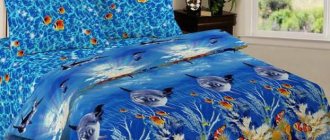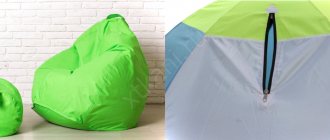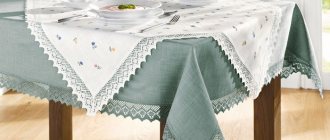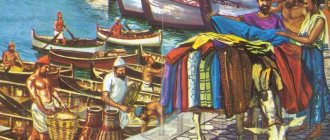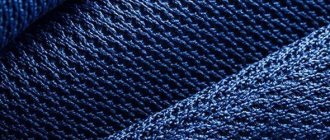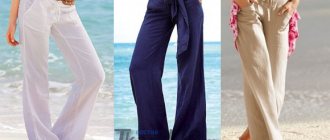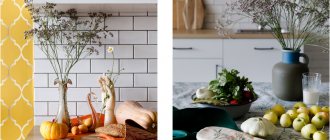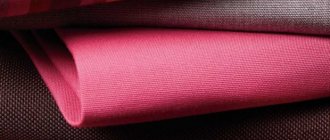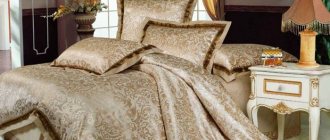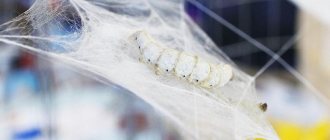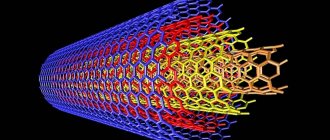Historical chronicles
Can you imagine that the first respectable men's suits did not have trousers? The crusaders who went on campaigns wore caftans. Archaeologists suggest that noble warriors in the Bronze Age wore prototypes of modern tailcoats and jackets.
During the reign of Louis XIV, nobles still wore flared caftans called justocors. In Russia they became popular under Peter I and were used as military equipment.
In the 17th century, a caftan appeared, which was sewn from thick cotton or linen. For nobles, it was decorated with gold buttonholes, pearls and precious stones.
Kaftan is a men's straight dress with flap or plain sleeves.
A little later, a tailcoat spread among noble gentlemen, and from the middle of the 18th century - a frock coat. At this time, there was a gradual division of the wardrobe: ballroom, everyday, work. And in the 19th century there was a sensation in the fashion world: the cut of suits changed, non-standard shades, their combinations and accessories appeared. The modern, presentable image is only being improved and transformed in detail. Otherwise, no major changes have occurred.
For women, trouser sets became available at the end of the 19th century thanks to the feminist movement. They were allowed to be worn by those young ladies who rode a bicycle. Officially, the first trousers for girls appeared only after World War II.
Yves Saint Laurent is a daredevil who put into use things for ladies that were originally intended for the stronger half. Pants with a jacket have become part of world fashion. Now these are common wardrobe items for both sexes.
Suit fabric: composition, types and properties
What should you consider when choosing a suit? Area of application, season and wear resistance. After all, schoolchildren, teachers and businessmen need different types of textiles. And winter and summer material differ in composition, density, and shade.
The product should be solid, hold its shape well, not “roll” and, ideally, not wrinkle.
Structure
This characteristic is responsible for the appearance and properties.
Melange. In this case, yarn of two or more tones is used. The fibers are intertwined and look great on any model due to their heterogeneity. In production, they take raw materials that are visually combined with each other. A beautiful new shade is coming out. For example, black and grey, blue and light blue, burgundy and beige, etc. If you take opposite colors, an unusual contrast is formed: red and yellow, white and black, pink and green. Melange is made from different components: linen, viscose, a mixture of synthetics and natural materials.
Fancy yarn creates different volumes, it is textured and heterogeneous. With the help of multi-twist threads, loops or knots of different shapes and sizes are formed. Its ingredients can be natural or mixed.
Twisted yarn is divided into 2 types: single-twist and multi-twist. In the production of the first, several fibers of the same length are mixed. And with the second method, threads that are already twisted are connected.
Textured fabrics are strong, stretchy and durable. They are not afraid of high temperatures and moisture. They are made from artificial or synthetic raw materials, although outwardly they are in no way inferior to fabrics made from natural fibers.
When sewing expensive, presentable sets, twisted yarn is often used. For school uniforms - practical, wear-resistant fabrics made of textured threads. The shaped and melange type is suitable for bright women's jackets, classic dresses, winter blazers.
Composition
The suit material, which was used a couple of centuries ago, had only a natural composition: linen, silk, wool or a combination of them. They are still in demand, despite their higher cost.
The era of plastic and progress in chemical technologies allows you to save on a small budget and extend the life of clothes for work or study. People have a choice: which suit to choose?
In synthetics, it will be hot outside in the hot summer, but if its “carrier” is in a cool office, then why not? Budget raw materials, which have more advantages than disadvantages:
- saves parameters well;
- gracefully fits the figure;
- perfect appearance;
- the price allows you to replenish your wardrobe;
- wide range of colors.
The suit can be made from natural, synthetic or mixed components.
Cotton formal attire is not popular. It is hygienic and pleasant to the body, but quickly loses its shape, shine and wears out. Therefore, polyester or elastane is added to the yarn. Denim sets are the perfect example of cotton and a small amount of synthetics. They are popular with all genders and ages, as they allow oxygen to pass through well and look relevant from season to season.
Linen is a great option for summer. But it is not recommended to sew formal blazers or vests from it. It wrinkles a lot and doesn't look very presentable. It is successfully mixed with artificial ingredients.
A wool-blend suit keeps its shape well (it contains 50-60% synthetics), it warms in winter and has an aesthetic appearance.
Wool yarn is one of the most expensive. Especially when it comes to Australian merino sheep. Despite the high price, it is in demand. A garment made of natural wool will last for many years and will retain its original shape. 5-10% of other raw materials are added to it: natural, artificial or synthetic.
Natural silk and cashmere can be found in the collections of famous couturiers or in the wardrobes of wealthy businessmen. A lot of money, time and effort are spent to produce them.
The most expensive suit in the world: R. Jewels. Its cost is $900,000. It is made of wool, silk and cashmere. It is decorated with 480 diamonds.
What type of fabric is this?
The suit fabric is intended for sewing business, work and everyday wear. This kind of fabric can have different composition.
Suit colors
It can contain either only natural or artificial components, or have a mixed composition.
Catalog of fabric made from natural fibers Catalog of fabric made from artificial fibers
Dress suit
For a business woman or university teacher, it is important that her clothes beautifully highlight her figure and look neat and stylish. From the suit you can sew elegant business dresses, blouses and skirts.
Galliano
Soft, pleasant to the touch. It does not deform after washing and does not fade in the sun. A dress made from it is suitable for an active girl who cannot spend a lot of time on grooming. It is made on the basis of polyester or viscose.
The twill weave ensures durability. Galliano is difficult to break. Therefore, a blouse made from it will please its owner for a long time.
Atlas
Shiny, flowy and elegant. It is obtained by mixing silk and synthetics. You can create an elegant evening look or a strict office look from it. Satin requires delicate care, as puffs form on it. Another disadvantage is that it does not allow oxygen to pass through well.
Pros:
- drapes well;
- hypoallergenic;
- variety of prints and shades;
- lasting;
- absorbs moisture.
Dresses, skirts, and blouses made of satin look expensive and aristocratic. This is an ideal option for a date, a business meeting, and for the dress code at work.
Crepe
Is it possible to create a festive outfit using crepe suits? Easily! An item made from it will look harmonious both in everyday life and at a special event.
Pros:
- Crepe makes comfortable and original things;
- pleasant texture;
- does not puff up;
- does not cheapen the image;
- difficult to get dirty;
- does not hinder movement.
Minuses:
- if the composition contains a large percentage of fibers of natural origin, there is a high probability of shrinkage;
- fades in the sun;
- It’s easy to “set” the puff.
Despite the disadvantages, the crepe suit has a lot of positive reviews.
Lyudmila, 47 years old: “I wear crepe clothes on a regular basis. It does not lose its shape, dries quickly after washing, is airy and light. You can wear this dress to work or for a romantic walk with your husband.”
Olga, 28 years old: “I am an aspiring clothing designer. I like working with crepe because it cuts well. It has a good texture that transforms the image of a girl with any figure.”
Viscose
It is impossible to sew a classic suit from “pure” artificial fabric. But creating a light blouse or skirt is a great idea.
These raw materials are in no way inferior to natural ones in their characteristics. A business woman who values comfort will be pleased with the lightness, breathability and variety of prints and tones.
Staple viscose is added to wool yarn, from which simple, trendy and durable garments are sewn.
Jersey
The black Chanel dress was made from a jersey suit. This is a pleasant, elastic knitwear that differs on the outside and inside: vertical loops on the front, horizontal stripes on the back.
Jersey is a versatile textile for a casual office dress or skirt. The more polyester in the composition, the less it will deform during wear. The negative side of jersey: pilling and poor heat tolerance.
Why do you need lining in suits?
Lining is an essential element of jackets. It has important functions:
- maintain the shape of the product and prevent it from stretching;
- protect the main fabric from wear;
- absorb excess moisture;
- provide comfort: smooth fabric glides well and does not stick to the shirt. This jacket is easier to put on.
The price of the suit is also affected by the quality of the lining material. Trying to save money, you can choose something with a lining made of cheap fabric. Budget options include polyester, polyester, and acetate. But this applies to products in which the lining only protects the back, and the shelves remain single-layer.
In everyday sets, viscose is often used, which has good thermal insulation properties. Thanks to maintaining an optimal climate, such clothes are not cold in winter and not hot in summer.
Suits for formal events, the so-called going out outfits, involve the use of only expensive fabrics. Silk is often chosen for this purpose. The material looks expensive and rich, but sweat stains remain visible on it. For lovers of creativity, the textile industry offers a mixed version (made of viscose and acetate) - shanzhan. On the contrary, you want to show off such a lining to others, because the graceful tints and muted shine look very impressive.
Spesori will tell you about the quality of the suit material. The product label contains numbers and letters. For example, 120S. The higher the number, the higher the quality.
Fabrics for men's suits
How can a modern “musketeer” impress a lady? Choose the right suit: quality of textiles, tone, texture. Strict attire emphasizes the status of a man and his external advantages. This is modern armor. The choice should be based on three components: budget, time of year, occupation.
Cloth
The key raw material is sheep or merino wool. Polyester is added to extend service life. Warm casual sets and stylish coats are made from it.
Externally, the cloth is fleecy and matte, with twill weaving. Business wardrobe items made from it look expensive, relevant and conservative. The most popular colors are gray, beige, black. Of the minuses: pellets that appear at the site of friction. Most often these are cuffs, pockets, armholes.
The cloth will appeal to practical men who value coziness, comfort and do not want to go to the dry cleaner.
Gozhka
When yarn is woven in a double or triple way in production, a costume matting is formed. Outwardly, it resembles burlap, only denser.
Despite the simplicity of the texture, matting is used to make comfortable men's or children's clothing. This is a great option for an active student. The matting allows air to pass through well and wrinkles easily. It is environmentally friendly and hassle-free to care for.
Its base is linen with wool with the addition of polyester. Due to the use of chemical raw materials, trousers and jackets made from matting retain their appearance for a long time and do not change in volume.
tiar
Practical everyday costumes for schoolchildren and men can be created from a tiara. It has good hygienic characteristics, because it has a mixed composition:
- 2% elastane (fits well);
- 40% polyester (durable, wear-resistant);
- 25-30% wool (keeps warm);
- 23-28% viscose (hygroscopic and tactilely pleasant).
The tiar does not fade, there will be no problems with it during washing, so you can save on dry cleaning. Most often, a strict classical ornament is applied to it: stripes, checks, rib.
Nicole
Many men do not like to wear formal jackets and trousers due to discomfort: limited movements, compression of the body. This will not happen with Nicole’s suit: it is dense and soft, elastic, but perfectly retains its shape.
Nicole doesn't fade, so it's a great option for fans of bright, outrageous prints or colors. A well-chosen combination of ingredients allows the fabric to stretch without deforming. It contains more than 66% polyester, which traps air. But viscose “corrects” the situation: the body breathes and does not sweat.
Pikachu
A budget option for those who do not wear formal clothes every day, and a jacket and trousers are only for going out. The composition of Pikachu is completely synthetic: elastane and polyester. The yarn stretches in both directions, so the men's outfit fits harmoniously to the figure.
Pros:
- presentable appearance;
- affordable price;
- ease during cutting and sewing;
- versatility;
- ease of care.
Pikachu (pikacho) does not allow air to pass through well and is electrified. Therefore, when sewing summer vestments, it is better to abandon it. But in winter or autumn it will be comfortable.
Tweed
Trendy formal sets for men can be made from tweed. The result: elegant, warm three-piece suits, jackets and vests made of sheep wool and 2-3% cotton.
A tweed suit will save its owner from the cold in late autumn or winter. She is natural, cozy and attractive. A man in a tweed suit looks stately and confident.
Minuses:
- not suitable for allergy sufferers;
- adds age;
- high percentage of shrinkage;
- may suffer from moths.
With proper and careful care, tweed will serve its owner for a long time.
Drape
Eternal fabric that practically does not suffer from wear and tear. Wool combined with synthetics extends its service life.
The drapery fabric is made with double or one-and-a-half weaves and passes through a press. Trousers, blazers and classic coats made of drape are suitable for severe frosts. They are not blown by the wind, they are warm and comfortable. The top layer always contains wool yarn, and the lining is a combination of wool and polyester.
In the 19th century in France, only aristocrats wore drape. Men's evening wear was made from it.
Triacetate
Is it possible to replace silk with an inexpensive alternative? Triacetate is a substance that is made chemically from cellulose. It is similar in characteristics to viscose, but more shiny and delicate.
Triacetate chips:
- it easily combines different textures and colors;
- you can make a stylish amber;
- can be draped;
- pleasantly tactile;
- not afraid of ultraviolet radiation;
- it looks like silk, but costs ten times less;
- does not absorb dirt deeply.
Triacetate is used to make flowing youth suits, tailcoats and accessories.
What should the material for the suit be?
You can't skimp on things like this. A professional will immediately notice a cheap outfit, and the wearer will not be taken seriously. It’s better to pay a tidy sum for a suit and feel confident in any situation. The main thing is to choose a quality product that is made from a material that meets the requirements for it.
Suit fabrics must be:
- shape-resistant: sagging knees on trousers or prominent elbows on a jacket make the look sloppy and cheap. Maintaining shape is the main requirement. This is achieved through special styles, the use of additional elements - shoulder pads, lining (in the area of sleeves, shelves or solid);
- durable: such costume fabric cannot be torn without additional physical effort. Even on textured canvases with a convex relief, tightening is an extremely rare occurrence. The surface must also be abrasion resistant. The appearance of shiny areas is unacceptable even after 2-3 years of intensive use;
- breathable: an important parameter, since a person wears clothes most of the day. Good ventilation will provide an optimal microclimate and protect against hypothermia and overheating;
- hygroscopic: moisture should be quickly absorbed and not remain on the surface. Otherwise, a greenhouse effect is possible. And wet armpits will negatively affect your business reputation;
- aesthetic: we are not talking about flashy decor, but about the appearance of textiles. Be sure to avoid pilling: cuffs, areas around pockets and buttons should remain smooth. High-quality coloring is also important. Even after several dry cleanings, the outfit should retain its rich color.
Good material does not create difficulties during work. This means that the threads can be easily moved apart and cut through, and the edges do not fray. Canvases with such characteristics help to minimize the percentage of defects.
The service life of suits made from quality materials is 3 years. But with proper care they will last longer.
Luxury suit fabric
A luxurious robe for a man who holds a serious position can be made from high-quality and expensive linen. Natural fibers will dominate the composition of luxury clothing. After all, an active businessman needs comfort and well-being.
Gabardine
Suit gabardine is a method of weaving yarn, not a composition. It is woven at an angle of 60 degrees, diagonally.
Characteristics of gabardine:
- stylish ribbed pattern;
- the fabric does not allow water to pass through;
- allows air to pass through;
- soft and pleasant;
- does not wrinkle;
- washing and ironing only in dry cleaning.
Previously, gabardine was made from sheep wool. Then they added linen, but the fabric became stiff. Modern gabardine can be made from either natural components or synthetic and mixed materials: stretch, melange, wool, cotton.
Cashmere
Cashmere clothing is a symbol of good wealth and financial well-being. These are expensive products made from the fluff of Tibetan goats. The cashmere suit is soft and weightless. To make the material brighter, wool is added to it, and to reduce the price - viscose and polyester.
Cashmere robes are durable and safe. They do not harbor parasites and do not accumulate dust.
To make the sets, half pashmina (a coarser type of cashmere) is used; it retains its shape better.
When Napoleon brought Josephine pashmina (fine cashmere) - everyone was conquered. After this, he began to gain popularity among the French aristocracy.
Silk
People with high incomes can afford products made from natural silk. The process of obtaining fibers is complex and painstaking.
Silk thread is similar in composition to human hair. Silk is difficult to spoil with alcohol or vinegar. It has bright shimmers and bactericidal properties; it does not burn, but smolders.
Evening tailcoats, blazers and trousers made of natural silk are a symbol of power, elegance and grandeur.
Wool
This is one of the oldest materials, which is still valued today, despite its high price.
Most often, synthetic threads are added to woolen threads. This prevents the products from deforming, rolling and extends their service life.
Wool repels dirt well, is easy to iron and rarely causes allergies. Therefore, both men and women often choose it for sewing ascetic sets.
Jacquard
Luxury, grandeur and wealth, which is embodied in matter. It seems that the ornament was applied to it by hand. Woven patterns are made by interlacing warp and weft threads. Even single-layer items look pompous. It is easy to care for and does not show any defects or dirt.
Jacquard is chosen by creative people: singers, actors, artists. Previously, its components were completely of natural origin. Now - blended or synthetic.
Requirements for costume materials
The choice of fabric depends on many factors: the gender of the owner of the costume, the purpose of the event for which it is intended, the time of year, the climatic conditions of the area, etc. In any case, the material must be of high quality and meet the following requirements:
- Form stability. In addition to the main fabric, good shape retention is also influenced by lining materials, style and auxiliary accessories - adhesive padding, shoulder pads, etc.
- Peel resistance. During use, there should be no pilling or tears in “problem” areas - under sleeves, near pockets or buttons.
- Reliability of coloring. Since suits are most often dry cleaned, it is important that they do not lose their original color.
- Low creasing of materials. Pants, skirt or jacket should remain presentable throughout the working day.
- Durability. In most cases, suits are designed to last for more than one season, so it is important that they look like new for as long as possible.
- Strength. Materials must be resistant to various types of mechanical stress.
The thermal conductivity of fabrics for sewing suits is also important. In cold weather, they should retain heat and keep you warm, and in summer, they should allow air to pass freely and not “float.”
Checkered suit
For those who love classics and retro, this is a successful fashionable look. Check is a classic version of both men's and women's sets. To sew business checkered suits, it is important to decide on the tone and size of the pattern: small or large.
The ancient Romans, Scots and samurai wore checkered clothing.
Checkered print:
- glenchek (a combination of small dark and light threads, considered classic);
- cotton “broken twill” (checked denim);
- argyle (square patterns arranged in a checkerboard pattern);
- “black watch” (a print in which dark green and purple colors alternate, they are separated by thin stripes);
- “burberry” (red, white and black lines intersect on a beige background);
- crow's foot (black and white combination).
On the territory of the USSR in the 80s there was a popular “tartan”: a short plaid pleated skirt.
You can buy a suit cage from us. The store offers a wide selection of materials of different colors, structures and qualities.
Other types of textiles
Many types of clothing fabrics are suitable for business or casual suits, skirts, shirts and dresses. But there is a material that, according to its characteristics, is a suit, but it is not worth sewing clothes from it. But it has applications in other areas of life.
Laguna is a furniture fabric with a pleasant patterned texture, a wide range of colors and an affordable price. It is suitable for sofas and armchairs of any shape. The lagoon can be easily cleaned with a dry vacuum cleaner.
Carpet fabric stretches easily, but does not tear. It is used for upholstery of car interiors. Since it is synthetic, it does not fade, absorbs noise well and is not afraid of moisture.
Kiwi is an interior material for upholstering upholstered furniture or sewing curtains. It shimmers and shines, and looks like satin.
You can try to sew a product from these fabrics if you are a beginner seamstress. They are budget-friendly and unpretentious in operation.
Proper care
In order not to harm your blazer or trousers, you need to carefully study the properties of all components. Materials of natural origin require more careful care than synthetic ones. To extend the life of formal trousers, jackets and skirts, you must follow the universal rules:
- If possible, take the item to dry cleaning;
- store in a case to protect from dust;
- do not use bleach for home washing;
- replace the iron with a steamer;
- do not twist wet items, let the water drain on its own;
- do not dry near a radiator or in the sun;
- The maximum temperature when washing wool is 30 degrees, “delicate” mode;
- To prevent your favorite jacket from smelling like mold, after washing you should hang it on a wide hanger and ventilate the room.
Ascetic jackets and skirts, tailcoats and trousers should look neat and well-groomed. To achieve this effect, you need to choose high-quality textiles that will not cheapen the look: dense, hygroscopic, breathable. And for children and teenagers it is worth purchasing strong, durable material that does not require complex care.
Features of care
The composition is of great importance:
- It is advisable to dry-clean woolen and wool-blend suits. They cannot be washed. It is allowed to remove stuck debris with a soft brush. Treatment with anti-moth products is required.
- Linen ones can be washed by yourself. For colored suit fabrics, the temperature should not exceed +40 degrees. For unpainted ones, +90 degrees is allowed. Use a gentle machine spin. You can steam it. Ironing is only allowed from the inside out.
- Denim varieties are easy to care for. Machine washable. Dry flat. Otherwise, creases will appear that are difficult to get rid of.
- Synthetics are easy to care for. Wash at temperature + 30-40 degrees. The soleplate of the iron should not be hot - the fibers may melt. Although many of the synthetic types do not require ironing.
A huge variety of suit fabrics allows you to find an option suitable for any time of year and different settings. Each buyer can choose a material depending on the intended purpose, appearance, and fashion preferences.
